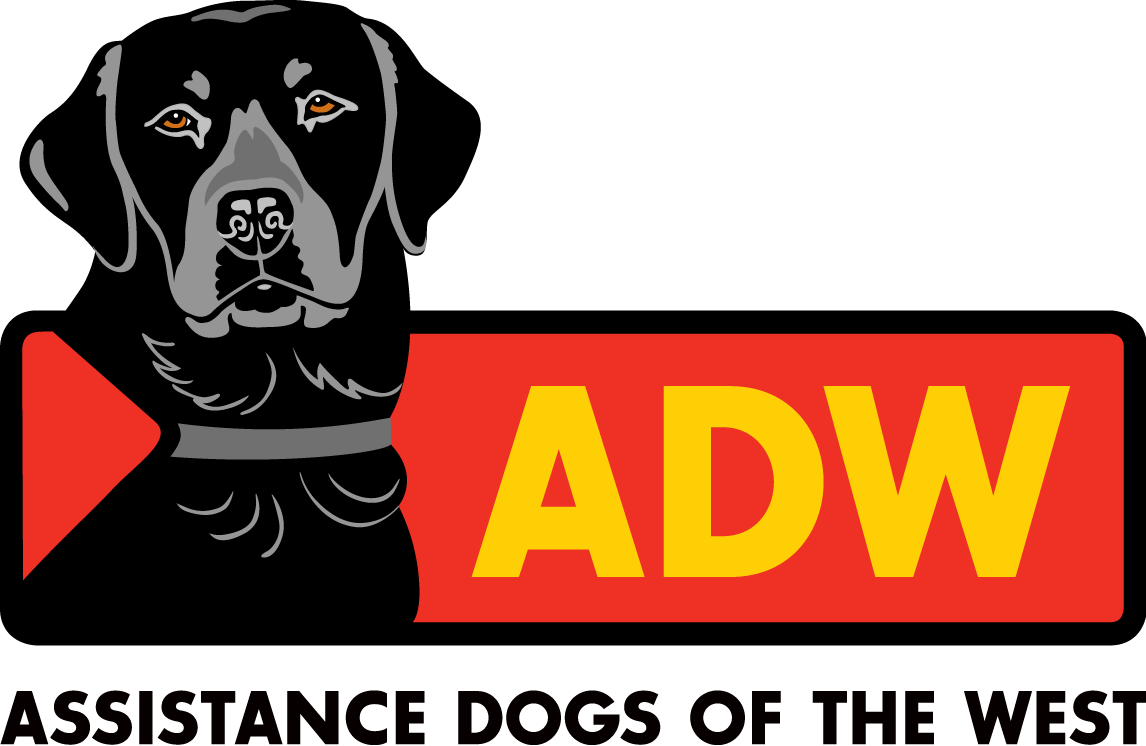OUR TRAINING APPROACH
Positive reinforcement in our training and interactions with dogs, student trainers and clients is the foundation of ADW’s whole-systems philosophy. From our founding, ADW was among the first service dog agencies to utilize a positive-reinforcement training approach. Clicker training with food rewards is our primary positive-reinforcement method. As clicker training has become more popular, we remain unique in our refusal to resort to punishment-based dog training.
The result of this positive-reinforcement approach is that ADW dogs love to learn and love to work. They are confident and emotionally balanced. Through these qualities ADW dogs when placed with clients foster enhanced client independence and a greater sense of self-reliance for client families. They offer unconditional love and companionship. They demonstrate how finding creative solutions to a wide range of human challenges greatly improves peoples’ experiences and their quality of life.
At work frequently in public with their handlers, ADW dogs also facilitate a means of comfortably beginning conversations that educate the public in understanding the many human populations that our program serves.
We’ve never used dominance — or punishment-based approaches to dog training.
Training Goals and Outcomes
ADW has 25-30 dogs in training annually to a minimum of 90 cues. The process typically takes 18- to 24 months and involves staff trainers who teach the student trainers to aid in dog training.
Puppies when they are as young as eight- to 10-weeks old (almost as soon as they arrive at ADW) begin working with the student trainers. From this early age, the puppies receive clicker training with food rewards as they progress to learning cues. This fun, positive-reinforcement method allows the puppies to learn complex retrieval tasks when they are still very young, as well as to associate work and learning with joy and confidence. By the time our dogs are placed with clients, they will have been reinforced hundreds of times for each cue by staff and student trainers in many locations.
Public Access Work
Training the dogs to work in public settings is the most demanding part of an assistance dog’s education. Despite the fascinating and sometimes scary sights, sounds and smells that a dog encounters in moving through the world with a trainer or a client, the behavior the dog must display in public must be impeccable. A service dog may not bark, sniff or eliminate in public; and may not interfere with other members of the public. The dog must perform all tasks quietly with minimal prompting. The dog must ignore all other dogs and animals in public. This requires a tremendous amount of self-control from a dog. We achieve this through graduated exposures and positive-reinforcement training that sets the dog up to make the right choices.
Pairing Dogs and Humans
We value the partnerships that develop first between assistance dogs in training and the student trainers and staff dog trainers. We invite the dogs to show us their individual talents as they develop. As each individual dog begins to express their choice of working path, we begin to tailor their training to match their capabilities and hearts’ desires.
During the interview process with prospective clients, we pay close attention to what the dog’s behavior is telling us. Are the dogs freely interacting with potential clients or not interacting with them? We like to see the dog’s behavior indicating a desire to work for a specific person by choosing this person over other rewarding opportunities in the training room, or choosing to stay with the prospective client rather than join the trainer or the other dogs. It is in this way that we truly allow ADW dogs to select their human partner and their life’s work. We simultaneously evaluate the prospective client’s behaviors with the dog.
Our annual graduation ceremony is when we honor the deep connections that student trainers have made with the dogs during the training process. At graduation we celebrate the milestones of our client and dog pairs, whose visible bonds demonstrate the incredible commitments made.
Release Dogs
Not all pups have the temperament or inclination to become successful service dogs with public access. A very small percentage of our dogs are “released” to applicants who are not clients. Most dogs are released because of health issues or minor behavior problems (such as barking in public). We endeavor to place release dogs in homes that can best accommodate their needs. Although we have a long waiting list for release dogs, our emphasis is always on finding the best possible home for the dog, regardless of when a candidate applied.
Often, we are able to place release dogs with people having some level of disability so that the release dogs become “home help-mates,” providing some assistance. We provide guidance to the new owners.





